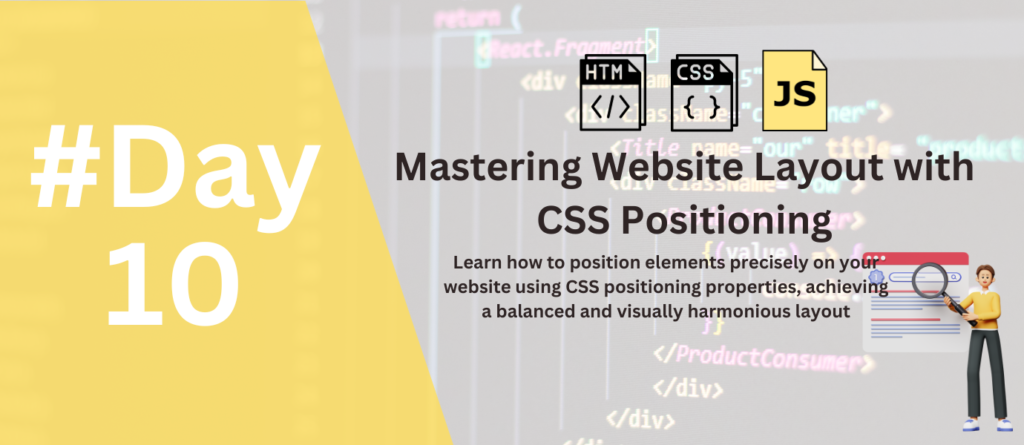Welcome, fellow web architects! Today, Day 10: Taming the Chaos! Mastering Website Layout with CSS Positioning, we tackle the art of spatial awareness: website layout! Gone are the days of text and images floating aimlessly on the digital canvas. We’ll wield the mighty CSS positioning properties, transforming your website into a meticulously crafted masterpiece, where every element dances in perfect harmony.
Let’s start by by an imagination :
Mastering Website Layout with CSS Positioning.
Imagine your website as a bustling city. You wouldn’t have buildings haphazardly scattered; they’d be arranged in streets, squares, and parks, each serving a purpose and contributing to the city’s overall flow. That’s the power of CSS positioning!
CSS offers a toolbox of positioning options:
- Static: The default, where elements follow the natural flow of the page. Think of them as houses built on solid ground.
- Relative: Elements move relative to their current position, like a car shifting lanes. Perfect for fine-tuning placement without major disruptions.
- Absolute: Elements break free from the flow, positioned with precise coordinates like skyscrapers defying gravity.
- Fixed: Elements stay anchored to the viewport, like a hovering billboard, regardless of page scrolling.
But wait, there’s more! We have modifiers to refine our positioning:

top,bottom,left,right: Control the exact distance of an element from the edge of its container.marginandpadding: Add breathing room around elements, preventing them from squishing together.z-index: Stack elements in layers, like overlapping buildings, creating depth and dimension.
Remember, layout is not just about aesthetics. It’s about user experience. A well-organized website is easier to navigate, read, and interact with, leading to happier users and better engagement.
Certainly! Below is a code example demonstrating the use of top, bottom, left, and right for positioning, margin and padding for spacing, and z-index for layering in CSS:
/* Positioning Example */
.container {
position: relative;
}
.element {
position: absolute;
top: 20px; /* Distance from the top edge */
left: 50px; /* Distance from the left edge */
}
/* Spacing Example */
.spacing-example {
margin: 20px; /* Creates margin around the element */
padding: 15px; /* Adds padding inside the element */
}
/* Layering Example */
.layer1 {
position: relative;
z-index: 1; /* Default layer */
}
.layer2 {
position: relative;
z-index: 2; /* Higher z-index, appears above layer1 */
}
.layer3 {
position: relative;
z-index: 3; /* Highest z-index, appears above layer2 */
}So, grab your virtual blueprints and start building! Experiment with positioning properties, explore modifiers, and find the perfect balance for your website. Remember, even the most majestic city needs open spaces and breathing room.
Don’t forget to share your layout creations and ask questions in the comments below! We’re here to cheer you on as you become a CSS positioning master!
Subscribe to our blog for more CSS tutorials and tips, and together, let’s build the web’s most beautiful and functional cities!




